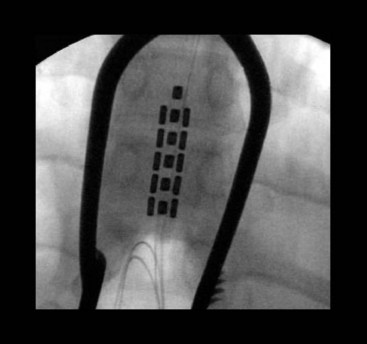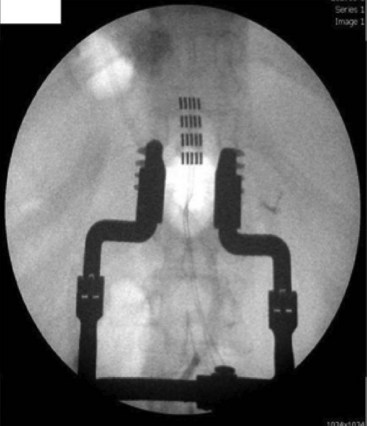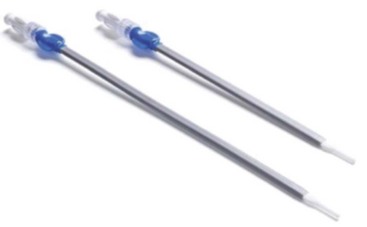Chapter 25 The Future of Neurostimulation
 Neurostimulation is rapidly evolving from spinal cord stimulation to more selective stimulation of peripheral nerves.
Neurostimulation is rapidly evolving from spinal cord stimulation to more selective stimulation of peripheral nerves.Introduction
Neurostimulation has undergone significant advancements since Shealy implanted the first spinal cord column stimulator in 1967.1 Predictions about the future of neuromodulation have been made previously but often fall short of reality since it is very difficult to comprehend the direction and magnitude of technology that will be available in the future.2 Today most of the impulse generators that power spinal cord stimulation (SCS) systems approximate the size of cardiac pacemakers and are rechargeable. Many advances have been made in miniaturization, which has afforded physicians both greater flexibility and better outcomes in neurostimulation. Since many of the new technologies currently under development are proprietary, of these new neurostimulation devices are discussed in generalizations. Although at times it is difficult to comment on specific innovations, the body of work and product development in this arena is impressive and ongoing.
Expanding Applications of Neurostimulation
Traditionally neurostimulation has been used in the treatment of chronic pain syndromes such as lumbar and cervical radiculopathy, failed back surgery syndrome, arachnoiditis, complex regional pain syndromes, and other neuropathic syndromes. Today the role of neurostimulation is expanding to include treatment of vascular disease, cardiovascular disease, refractory migraine headaches, chronic pancreatitis, visceral pain, and urological syndromes such as pelvic pain, rectal pain, bladder and fecal incontinence, and erectile dysfunction.3 In addition, deep brain stimulation has been used effectively to treat central nervous system disorders such as Parkinson disease, and vagal nerve stimulation has been used to treat gastroparesis. Motor cortex stimulation is another exciting area that has shown promise in complex pain patterns of the head and neck.4
Advancements in Neurostimulation Electrodes
The development of multicolumn paddle laminotomy lead systems and octrode percutaneous lead systems has revolutionized the treatment of axial low back pain. Many new paddle constructs have three to five columns that allow for selective depolarization of specific spinal structures (Figs. 25-1 and 25-2). This allows for more tailored stimulation of the patient based on complex pain patterns. A new generation of percutaneous leads is currently under development that will provide physicians with even greater versatility in the treatment of neuropathic pain syndromes (Table 25-1). In addition, percutaneous multilead systems are currently under development that will offer the advantages of a laminotomy lead without the need for an invasive surgical dissection for placement. The use of a percutaneous delivery tool for a paddle construct is now approved in Europe and should be seen in the United States in the near future (Fig. 25-3). The improved efficacy and treatment options for SCS coupled with new risks identified for intrathecal drug delivery systems have led to a new interest in using stimulation earlier in the treatment algorithm.5 SCS has now moved ahead of long-term chronic opioids, reoperation for spinal disorders, and intrathecal drug delivery in patients with neuropathic and mixed pain of the low back and lower limbs.
Table 25-1 Comparison of Available and Possible Future Neuromodulation Devices
| Available | Now | Future |
|---|---|---|
| Percutaneous leads | 8 Contacts | 64 + |
| Tripole leads | Surgical laminectomy | Percutaneous tripole |
| BION | 2 Contacts | More ± high frequency |
| Low frequency | 30 Hz-5 kHz | 40 kHz + |
| Wireless generator | Microtransponder | Wireless couple with Bluetooth devices (iPod or cell phone) |
| Rechargeable generator | 10-year life | Infinite recharging capacity |
| SNRS | Uses quad or octrodes | Intraspinal placement of Microstim devices with wireless capability |
< div class='tao-gold-member'>
Stay updated, free articles. Join our Telegram channel

Full access? Get Clinical Tree













